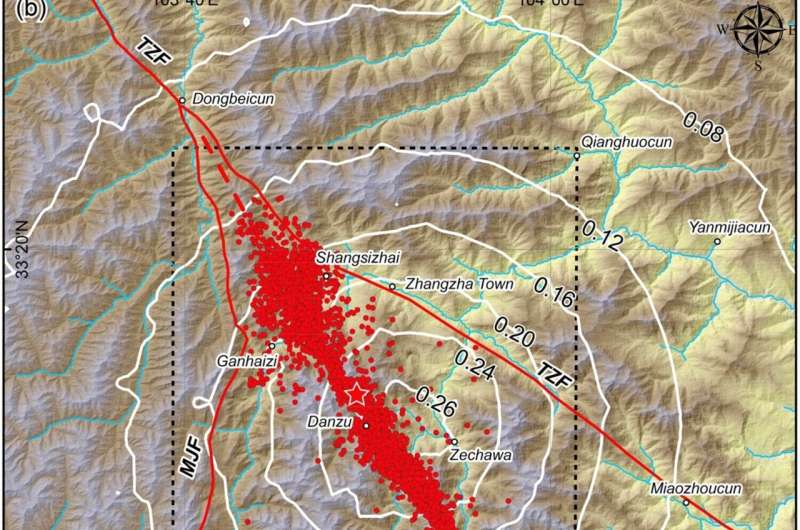This article has been reviewed according to Science X's editorial process and policies. Editors have highlighted the following attributes while ensuring the content's credibility:
fact-checked
trusted source
proofread
Exploring long-lasting effects of pre-phase landslides on future landslide occurrences

A research team from the Aerospace Information Research Institute (AIR) of the Chinese Academy of Sciences has explored the long-lasting effects of pre-phase landslides on future landslide occurrences and evaluated the susceptibility of regions prone to seismic events.
The study was published in the International Journal of Digital Earth on Oct. 18, aiming to establish a robust post-seismic landslide susceptibility model and unravel the spatio-temporal dynamics of landslide vulnerability.
With a focus on the magnitude-7.0 earthquake-stricken Jiuzhaigou World Heritage Site in southwest China's Sichuan Province, the study adopted an integrated space-to-ground monitoring technology to build a multi-temporal post-seismic landslide dataset. This dataset serves as a fundamental component for assessing the post-seismic landslide susceptibility.
The researchers took the buffer analysis method to document the spatio-temporal characteristics of post-seismic landslides, and to understand how the location and timing of landslides are influenced by previous seismic events.
Moreover, they found that distance was a pivotal factor in quantifying the legacy effect of pre-phase landslides on future landslide occurrences. Based on this, they established an improved time-variant model to evaluate post-seismic landslide susceptibility accurately.
Results showed that post-seismic landslides tended to gradually occur in closer proximity to pre-phase landslide locations over time. The distance from the initial landslides emerged as a critical indicator, significantly enhancing the precision of post-seismic landslide susceptibility models. Notably, the correlation between landslide susceptibility and seismic activity weakened after a significant seismic event.
This study underscores the importance of understanding the enduring impact of pre-phase landslides on future landslide susceptibility, therefore contributing to more effective disaster management and mitigation strategies in seismically active regions.
More information: Xinyi Guo et al, Enhancing post-seismic landslide susceptibility modeling in China through a time-variant approach: a spatio-temporal analysis, International Journal of Digital Earth (2023). DOI: 10.1080/17538947.2023.2265907
Provided by Chinese Academy of Sciences




















